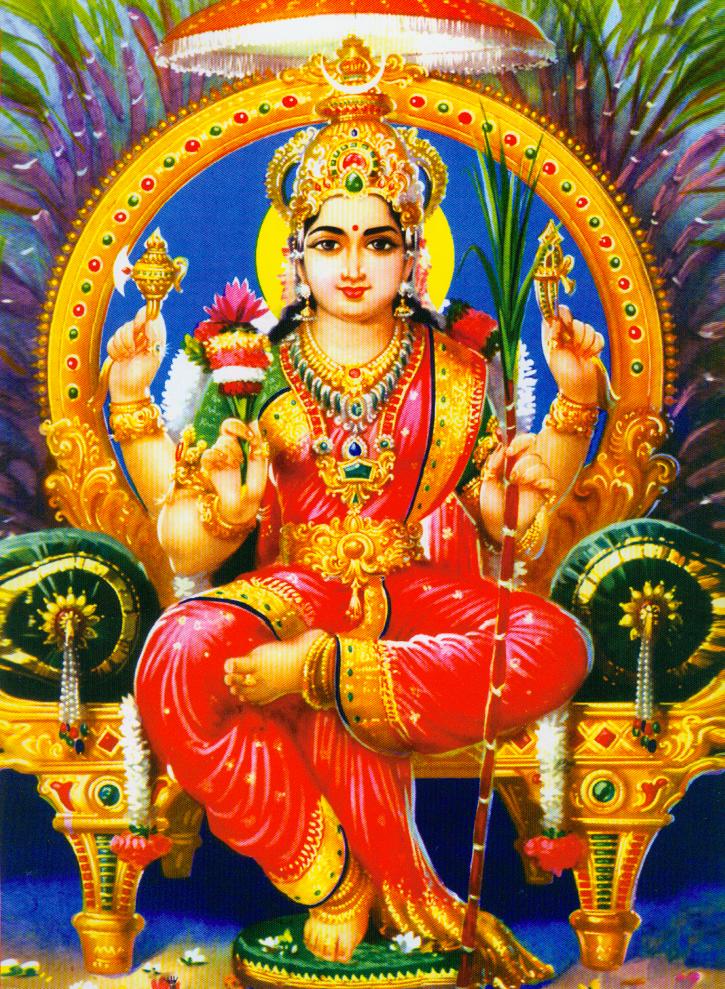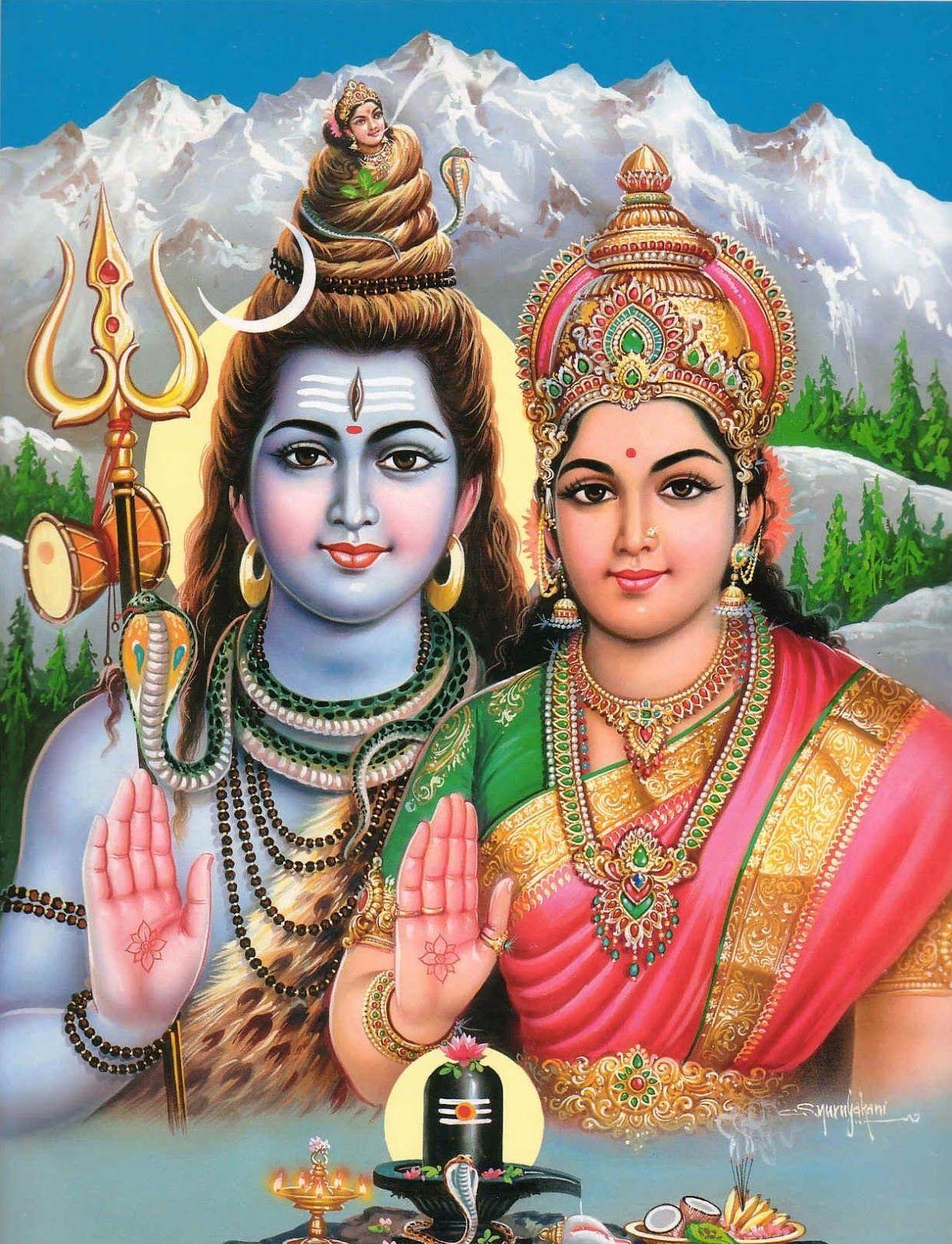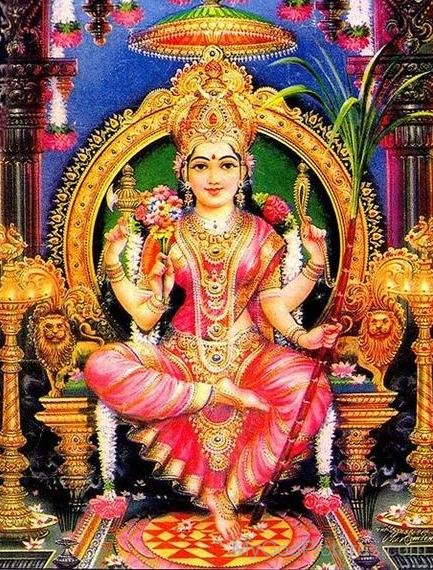When we think about someone's age, we usually consider years lived or perhaps a particular point in their life. But what happens when we try to put an "age" on a divine being, a figure from stories told across generations? It's a bit like trying to measure the wind, or so it seems. A quick, perhaps shallow look at such a concept might just miss the truly vast and deep significance that lies beneath the surface of these ancient tales. This kind of inquiry invites us to think beyond simple numbers and into the enduring nature of myth.
Our focus here centers on Parvati, a figure deeply woven into the fabric of certain very old belief systems. She is, as some accounts tell us, the cherished child of the great Himalayan mountains, and she is also the partner of Shiva, a powerful deity known for bringing things to an end, you know, to make way for new beginnings. Her story, as a matter of fact, stands out a bit from those of other goddesses from that part of the world, largely because of her deep commitment to a way of life that involves very strict self-discipline and giving up worldly pleasures. She is, in a way, a living example of a certain kind of spiritual strength, a sort of vital energy that animates everything.
So, as we consider what "Parvati Shallow Age" might actually mean, we're not really looking for a birth certificate or a date on a calendar. Instead, we are exploring the timelessness of a mythological character, the way her story has continued to be meaningful for thousands of years. We will look at her origins, her connections to other divine beings, and how her existence, in a sense, stretches back through an almost immeasurable span of time. It's a way of looking at her enduring presence in the human imagination, which is actually quite something.
- Where Can I Buy Concert Tickets
- Lindsay Crouse Actor
- How Many Weeks Till Xmas
- Giantess City
- Who Is Westman Atelier
Table of Contents
- Who is Parvati- A Mythological Biography
- The Parvati Shallow Age- Her Origins and Early Depictions
- What Does "Age" Mean for a Goddess?
- Parvati Shallow Age- Timelessness and Enduring Influence
- Parvati's Family- Connections and Divine Lineage
- Karttikeya- A Son's Story and His Place in the Parvati Shallow Age Narrative
- Beyond One Culture- How Other Pantheons Compare
- The Parvati Shallow Age- A Look at Broader Divine Histories
Who is Parvati- A Mythological Biography
Parvati, as we have been told through many old stories, holds a truly special spot within a very rich collection of divine figures. She is often described as the offspring of the Himalayan mountains themselves, which gives her a connection to the natural world that is both grand and deeply rooted. This connection, you know, paints a picture of her as someone who is both powerful and also very much a part of the Earth's enduring strength. Her birth from such an immense and ancient landscape almost suggests a timeless quality about her own being, a kind of existence that transcends typical human lifespans, which is pretty interesting.
Beyond her parentage, Parvati is also recognized as the beloved partner of Shiva, a deity who holds a very important role in the cosmic cycle. Shiva is often thought of as the one who brings things to an end, but this ending is usually for the purpose of making new beginnings possible. Their partnership, in some respects, is a representation of the balance between creation and the breaking down of things, a kind of fundamental rhythm of the universe. This union with such a powerful force further highlights Parvati's own significant place in the divine order, basically showing her as a truly central figure.
What sets Parvati somewhat apart from other goddesses mentioned in these ancient traditions is her rather intense dedication to a life of strict self-control and spiritual discipline. She is known for her extreme asceticism, a practice that involves giving up many worldly comforts and pleasures in pursuit of higher spiritual goals. This aspect of her character, you see, speaks to a deep inner strength and a profound focus on what is beyond the material world. It's almost as if her spiritual journey is a defining feature of her identity, distinguishing her from others who might represent different divine qualities, or so it seems.
- Jill St John
- How Old Is Fredrik From Million Dollar Listing
- Ann Susi
- Meat Temperature For Medium Rare
- At What Temp Is Steak Medium Rare
Furthermore, Parvati is often understood to be an embodiment of Shakti, which is a concept representing the very vital, creative energy that flows through the universe. This means she is not just a goddess in name, but rather a living, breathing representation of universal force. This idea suggests that she is not merely a character in a story, but instead a fundamental principle of existence itself. This connection to Shakti, you know, gives her a boundless kind of power and an influence that extends to all things, making her presence absolutely essential to the cosmic workings.
The Parvati Shallow Age- Her Origins and Early Depictions
When we consider the idea of the "Parvati Shallow Age," we are perhaps looking at the earliest, or maybe the most straightforward, ways people have understood her beginnings. Her origin as the child of the Himalayan mountains, for instance, immediately places her in a setting that is incredibly ancient and deeply respected. This connection to the mountains, which have stood for countless ages, suggests that her own story is rooted in something that feels, you know, incredibly old and enduring. It's not about a specific birth date, but rather about a timeless emergence from the very fabric of the world, in a way.
The earliest tales that speak of Parvati tend to focus on her purity, her deep spiritual commitment, and her desire to unite with Shiva. These stories, you know, often highlight her severe self-discipline and her unwavering devotion. If we take a somewhat shallow glance at her "age" here, it might just point to the initial phase of her mythological existence, where her core attributes were being established. This period, arguably, sets the stage for all the more complex narratives that would follow, defining who she is at her very core, which is pretty interesting.
Her role as the wife of Shiva also forms a very early and central part of her identity. This partnership is not just a simple marriage; it is a profound cosmic union that brings together complementary forces. The stories about their coming together, and the challenges they faced, are some of the first narratives that truly shape our perception of her. So, when we talk about this early "Parvati Shallow Age," we are really thinking about the foundational myths that describe her essence, her relationships, and the initial ways in which she was understood by those who told her tales, and stuff.
What Does "Age" Mean for a Goddess?
It's a really interesting question, isn't it, to ask what "age" could possibly mean when we're talking about a divine being, someone who is, by their very nature, often considered to be beyond the typical passage of time? For us, age means growing older, experiencing things over years, and moving through different life stages. But for a goddess, especially one like Parvati, who is deeply rooted in ancient stories and cosmic principles, the idea of age takes on a completely different kind of meaning. It's not about how many birthdays she has had, or so it seems.
Perhaps "age" for a goddess refers more to the enduring nature of her presence, the way her stories and her influence have continued to be meaningful for countless generations. It might point to the length of time she has been revered, or the span of human history over which her myths have been shared and celebrated. In this sense, her "age" is not a personal timeline, but rather a collective human experience of her divine being. It's about how long she has been a part of the human spiritual landscape, which is actually quite something.
Moreover, the concept of a goddess's "age" could also relate to the timelessness of the principles she represents. If Parvati is an embodiment of Shakti, that vital, creative energy, then that energy has always existed and will always exist. It doesn't have a beginning or an end in the way a human life does. So, her "age" might be an echo of the eternal nature of the cosmic forces she personifies, a kind of endless existence that is beyond our usual way of measuring time. This makes her "age" a rather profound concept, you know, almost beyond words.
Parvati Shallow Age- Timelessness and Enduring Influence
When we look at the "Parvati Shallow Age" through the lens of timelessness, we're considering how her story, despite its ancient origins, continues to resonate in the present day. It's not about her being "old" in the human sense, but rather about her enduring relevance. Her role as the daughter of the Himalayas, for instance, connects her to a natural world that has stood for untold eons, suggesting an inherent timelessness in her very being. This aspect of her character, you know, makes her seem like a permanent fixture in the spiritual landscape.
Her status as the wife of Shiva, a deity associated with cycles of destruction and creation, further emphasizes her connection to processes that are eternal. Their union is a symbol of balance that is always at play, not something that began at a specific point in time and will end. So, the "Parvati Shallow Age" in this context might refer to the idea that her influence is not limited by any particular era or period. It's almost as if her essence remains consistent and powerful, regardless of the historical moment, or so it seems.
The fact that she is seen as an embodiment of Shakti, the universal life force, also points to her being beyond a measurable age. This energy is ever-present, constantly creating and sustaining. Therefore, her "age" is essentially boundless, reflecting the infinite nature of the energy she represents. This perspective, you see, moves us away from a simple, perhaps shallow understanding of age and into a deeper appreciation of her enduring, timeless presence in mythology and belief, which is pretty interesting.
Parvati's Family- Connections and Divine Lineage
Parvati's story is not just about her alone; it is deeply intertwined with the divine beings around her, forming a kind of sacred family unit that is very important in the stories. Her connection to the Himalayan mountains as her father, for instance, gives her a very specific and grand lineage, rooting her in the very landscape of the world. This parentage, you know, suggests a certain kind of strength and resilience, much like the mountains themselves, which have stood for countless ages. It's a foundational part of who she is, basically.
Her partnership with Shiva, the god known for his role in bringing things to an end, is arguably the most central relationship in her mythological life. This union is not just a personal bond; it is a cosmic one that affects the entire universe. Their interactions, their challenges, and their shared purpose are often at the heart of many important narratives. This connection, you see, highlights her role not just as an individual goddess, but as a key player in the grand cycles of creation and transformation, which is actually quite something.
And then, of course, there is Karttikeya, who is described as the son of Shiva and Parvati. This familial tie adds another layer to her story, making her a mother figure within the divine pantheon. The presence of a child further cements her role in the continuation of divine lineage and the unfolding of mythological events. Even though some versions of his story might suggest different parents, the most common and widely accepted account places him firmly as their offspring, making him a very significant part of their shared narrative, or so it seems.
Karttikeya- A Son's Story and His Place in the Parvati Shallow Age Narrative
Karttikeya's story, as the son of Shiva and Parvati, adds a very interesting dimension to our understanding of the "Parvati Shallow Age." His birth, in many tales, marks a significant point in the mythological timeline, a kind of new chapter for the divine couple. He is, you know, often known as the god of war, a powerful figure who embodies courage and strategic thinking. This role means he plays a very active part in the cosmic battles and the protection of the divine order, which is pretty important.
While some stories do mention other possible parents for Karttikeya, the most widely accepted and enduring versions firmly place him as the child of Shiva and Parvati. This connection, you see, reinforces Parvati's identity not just as a partner to a powerful deity, but also as a mother within this divine family. His existence, in a way, shows the continuation of their divine line and the unfolding of new narratives stemming from their union. It's almost as if his birth represents a kind of generational progression within the mythological world, or so it seems.
The "Parvati Shallow Age" narrative, when viewed through Karttikeya's story, might suggest a period where the divine family expands and new roles emerge. His tales often involve his youthful vigor and his accomplishments, which contribute to the broader saga of the gods. So, his presence helps us understand that even within the timeless existence of deities, there are still events and relationships that unfold, creating a rich tapestry of stories that evolve over what feels like countless ages, basically giving more depth to her enduring presence.
Beyond One Culture- How Other Pantheons Compare
It's fascinating to consider how the stories of Parvati fit into a much wider picture of divine beings and belief systems from around the world. While our discussion has been centered on her, it's worth taking a moment to look at how other cultures have built their own collections of gods and goddesses. This kind of comparison, you know, helps us appreciate the different ways people have tried to make sense of the universe and their place within it. It's a way of seeing the common threads that run through human spirituality, which is actually quite something.
For example, if we turn our attention to the pantheon of Chinese gods and goddesses, we find a system that is incredibly vast and has grown over thousands of years. This collection of deities is not fixed; it has changed and developed, incorporating different beliefs from various ethnic groups and adapting to shifting geographical boundaries. This long history, you see, means that their divine figures have also accumulated layers of meaning and story over immense periods of time, much like Parvati's own enduring narrative. It's a rather rich and complex system, or so it seems.
The sheer scale and historical depth of the Chinese pantheon really highlight that the idea of divine "age" or historical development is not unique to one culture. Just as Parvati's story has roots that stretch back through many centuries, so too do the tales of Chinese deities. This comparison helps us understand that the enduring presence of divine figures, and the way their stories have adapted and grown over time, is a universal human experience. It shows that people everywhere, for a very long time, have sought meaning in these powerful, timeless figures, basically connecting us all through shared human experience.
The Parvati Shallow Age- A Look at Broader Divine Histories
When we broaden our view to include other divine histories, like the extensive Chinese pantheon, it helps us put the "Parvati Shallow Age" into a wider perspective. The Chinese collection of gods and goddesses, for instance, has a history that spans thousands of years, encompassing many different groups of people and changing borders. This long timeline, you know, makes it clear that the concept of deities existing for vast periods is a common theme across human cultures. It's not just a feature of one set of beliefs, but a recurring idea in how people understand the divine, which is
Related Resources:



Detail Author:
- Name : Carroll Wunsch
- Username : shaniya.anderson
- Email : schultz.alex@hotmail.com
- Birthdate : 1979-12-11
- Address : 351 Barrows Harbors Theodoratown, HI 99576
- Phone : +1-734-493-2078
- Company : Wolf-Kovacek
- Job : Gaming Manager
- Bio : Eos magnam sunt dolorum voluptates quia ipsam. Sit nesciunt porro ut. Quia et corrupti non expedita autem illo possimus. Iure voluptatem nihil sed dignissimos aliquam ex corporis.
Socials
tiktok:
- url : https://tiktok.com/@raqueljaskolski
- username : raqueljaskolski
- bio : Aut ducimus maiores enim ut voluptates quibusdam minus.
- followers : 2198
- following : 2797
instagram:
- url : https://instagram.com/jaskolskir
- username : jaskolskir
- bio : Eos ut quae maxime unde. Quis iusto ullam tenetur dicta molestiae neque. Quasi fuga velit minus.
- followers : 1720
- following : 1688
twitter:
- url : https://twitter.com/raquel_jaskolski
- username : raquel_jaskolski
- bio : Delectus incidunt ut vel aut earum. Rerum quo qui et nihil. Quasi quod consectetur non ut.
- followers : 5648
- following : 41
linkedin:
- url : https://linkedin.com/in/raquel3484
- username : raquel3484
- bio : Illum atque ad est nemo omnis fuga qui.
- followers : 615
- following : 233
facebook:
- url : https://facebook.com/jaskolski1984
- username : jaskolski1984
- bio : Laudantium nobis hic temporibus vero unde odio.
- followers : 5950
- following : 2847